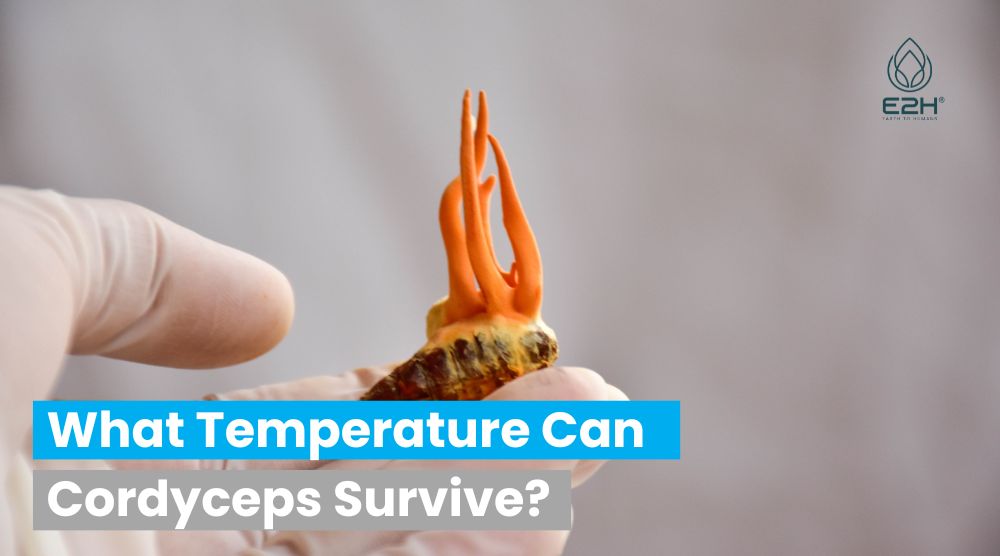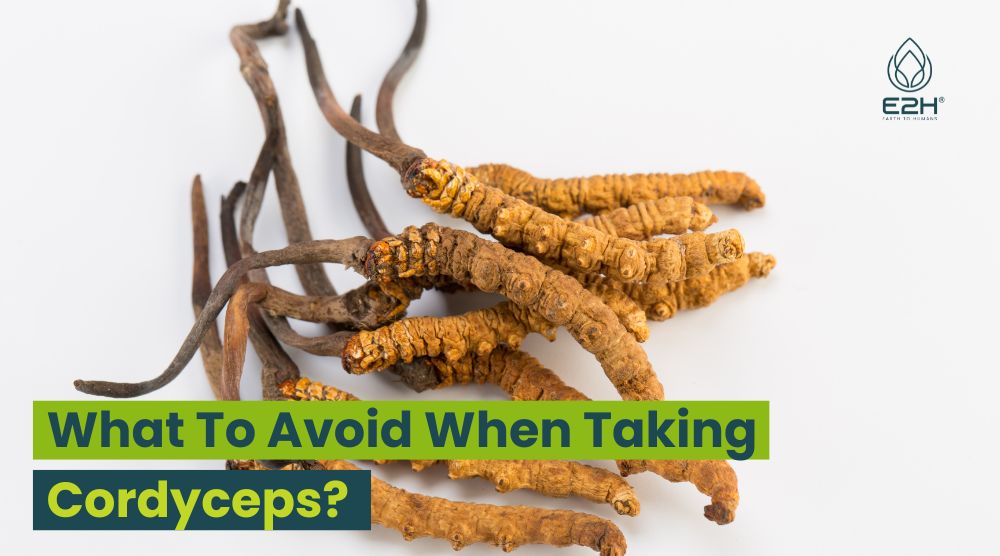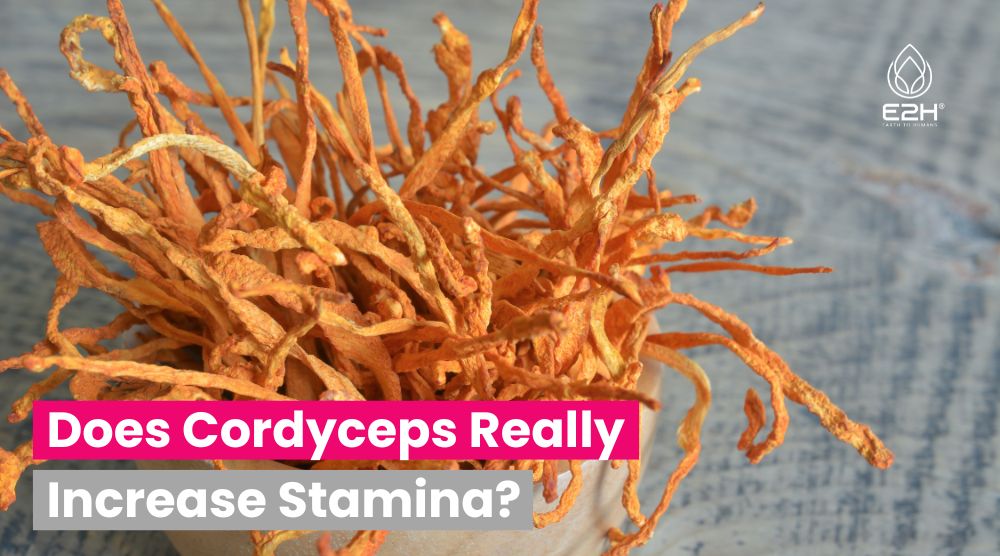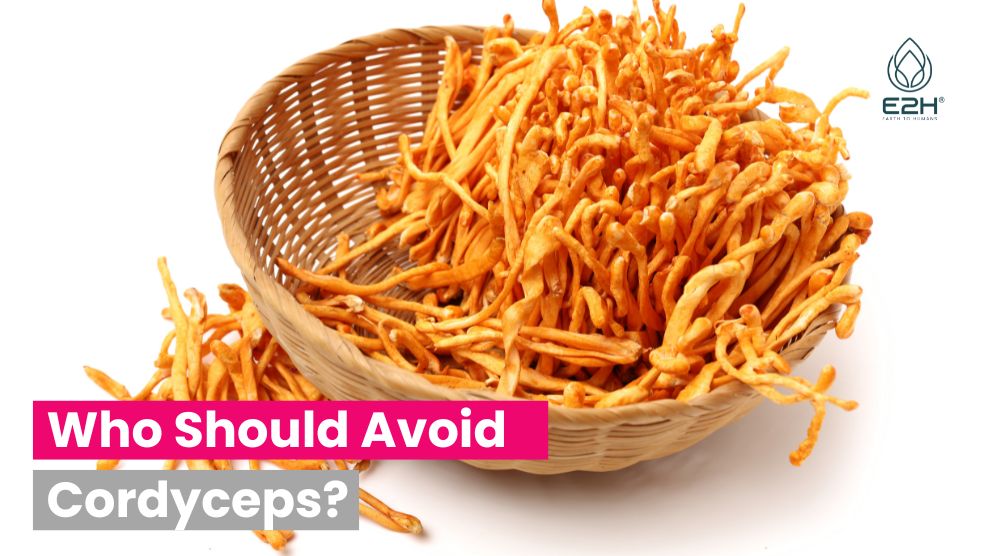Cordyceps survive in varying temperatures, with optimal ranges differing per species; for instance, Cordyceps militaris prefers around 25°C (77°F). However, exact survival temperatures are species-dependent and influenced by environmental conditions.
Now, we explore what temperature can cordyceps survive in, unveiling the secrets of their resilience and adaptability.
The Temperature Dilemma
Traditionally, cordyceps and other fungi have struggled to survive and reproduce at the internal body temperature of mammals, approximately 37 degrees Celsius (98.6 degrees Fahrenheit). This temperature barrier but what has kept us relatively safe from a wide range of fungal infections.
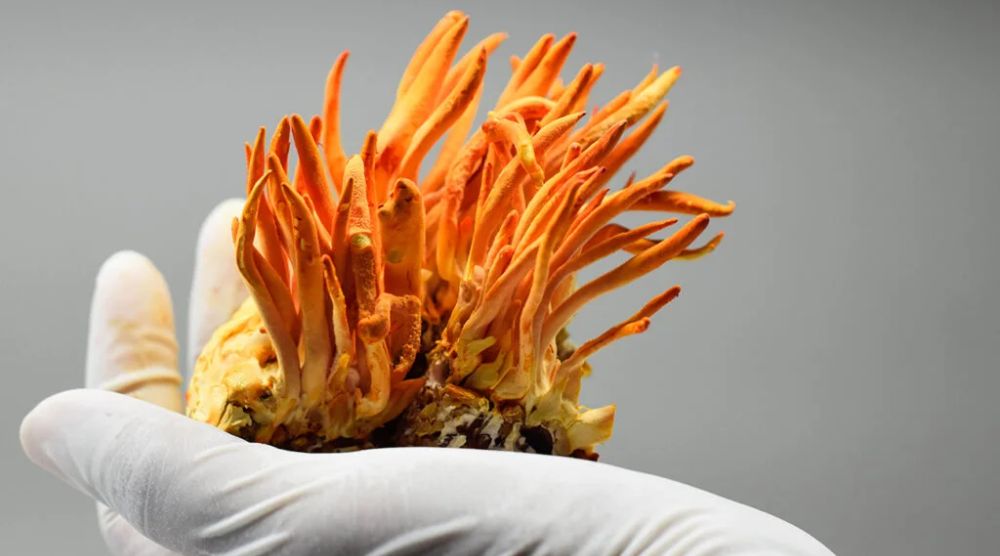
However, the question arises, what temperature can cordyceps survive, and could they adapt to higher and warmer temperatures too, potentially posing a threat to mammals, including humans?
The Impact of Global Warming
Global warming is altering the environment, potentially providing organisms in cordyceps with the opportunity to evolve and adapt to higher temperatures. Dr. Neuman, a character in The Last of Us, speculated about the possibility of fungi evolving due to a warmer planet.
- Global Warming and Fungi Evolution:
- The World Health Organization has noted an expansion in the incidence and geographic range of fungal diseases due to global warming and increased international travel and trade.
- Arturo Casadevall, a renowned microbiologist, has pointed out that as the planet warms, many fungi strains will either adapt or perish.
Candida Auris: A Real-world Example
A more real life in-world example of a fungus adapting to higher temperatures is Candida auris. This deadly fungus emerged between 2012 and 2015 and has acclimatized to human body temperature. It appeared in various parts of the world, seemingly out of nowhere, suggesting that it adapted to higher temperatures over the years until it could infect humans.
Are there studies on the temperature tolerance of different cordyceps species?
| Species Name | Optimal Growth Temperature | Maximum Tolerance Temperature | Notes |
|---|---|---|---|
| Cordyceps militaris | 25°C (77°F) | 30°C (86°F) | Thrives in cooler, humid environments |
| Ophiocordyceps unilateralis | 27°C (80.6°F) | 32°C (89.6°F) | Prefers tropical, humid climates |
| Cordyceps sinensis | 22°C (71.6°F) | 28°C (82.4°F) | Grows in high-altitude regions |
| Cordyceps bassiana | 24°C (75.2°F) | 29°C (84.2°F) | Common in temperate regions |
Can I grow cordyceps at room temperature, or do they require specific conditions?
Cordyceps can indeed be cultivated at room temperature, but they thrive best under specific conditions, often requiring controlled environments to mimic their natural habitats. Typically, cordyceps prefer cooler and humid climates, with optimal growth temperatures varying between species.
For instance, Cordyceps militaris is known to thrive best around 25°C (77°F). It is crucial to maintain the right balance of temperature, humidity, and light to ensure healthy growth and to preserve the beneficial compounds found in cordyceps.
What temperature control measures are used in large-scale cordyceps cultivation?
In large-scale cultivation, precise temperature control is paramount. Advanced climate control systems are employed to maintain optimal temperature, humidity, and light conditions. These systems allow for the adjustment of environmental parameters to suit the specific needs of the cordyceps species being cultivated, ensuring optimal growth and potency. Regular monitoring and adjustments are made to maintain the desired conditions and to avoid any fluctuations that could impact the quality of the cordyceps.
Are there specific temperature zones where cordyceps are most commonly found?
Cordyceps are predominantly found in specific temperature zones that align with their unique growth requirements. For example, Cordyceps sinensis is commonly found in the high-altitude regions of the Himalayas, where the environment is cool and the air is thin.
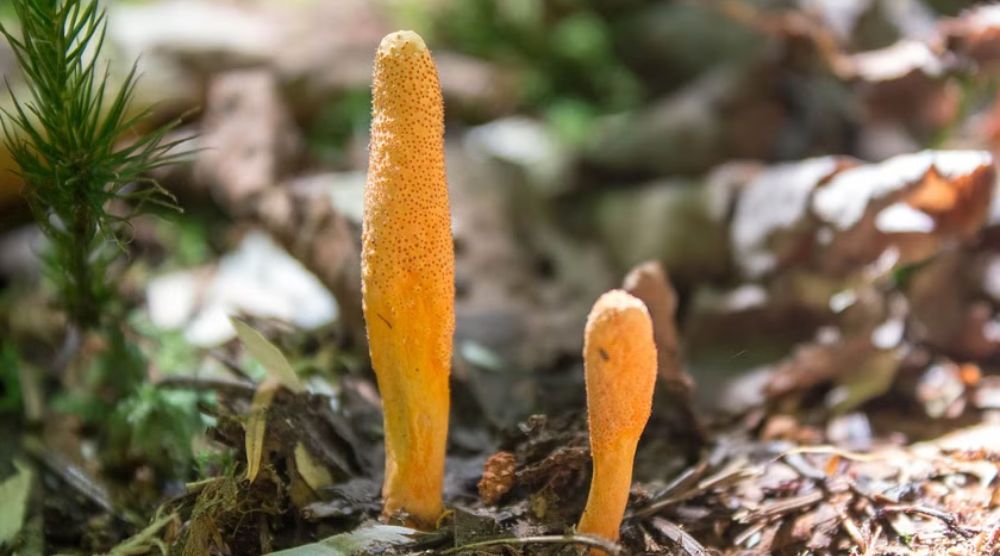
Conversely, Ophiocordyceps unilateralis prefers the slightly warmer and, humid climates of tropical regions. The diverse range of cordyceps species is a testament to their adaptability to different temperature zones, each species having evolved to thrive in its unique habitat.
Can temperature impact the success of cordyceps infections in insects?
Absolutely, temperature plays a crucial role in the life cycle of cordyceps, impacting their ability to infect insects. Cordyceps species have evolved to adapt to the environmental conditions of their native habitats, and any deviation in temperature can affect their ability to infect and control their insect hosts.
Optimal temperatures enable the cordyceps to effectively infiltrate the host, grow, and reproduce, ensuring the propagation of the species.
Does temperature affect the potency of cordyceps extracts used in traditional medicine?
Temperature indeed has a significant impact on the potency of cordyceps extracts. The growth conditions, including temperature, directly influence the concentration of bioactive compounds in cordyceps. Optimal growing conditions ensure the highest potency and efficacy of the extracts used in traditional medicine.
Any deviation from the ideal temperature can lead to a decrease in the concentration of beneficial compounds, affecting the therapeutic value of the cordyceps extracts. Proper storage conditions are also crucial to maintain the potency of cordyceps extracts post-harvest.
The Reality of Cordyceps Infecting Humans
The cordyceps fungus, specifically Ophiocordyceps unilateralis, primarily infects insects like ants and wasps. It takes control of its host by growing around the ant and brain and hijacking the insect’s nervous system.
While the idea of cordyceps infecting humans makes for compelling fiction, experts believe it’s highly unlikely. João Araújo, an expert on parasitic fungi, explained that for the fungus to infect mammals, it would require millions of years of genetic changes. Each fungal species has evolved to adapt to a specific insect, making a jump to humans seem like pure science fiction.
A Potential Fungal Pandemic?
The notion of a fungal pandemic has been debated among experts. While some see it as a possibility, others, like David Hughes, a cordyceps specialist, find it improbable due to the nature of most fungal species’ transmission pathways, which are primarily through touch or surfaces.
However, experts agree that temperature plays a crucial role in fungal infections, and the potential for more fungi emerging as human pathogens is significant. Tom Chiller, chief of the fungal disease branch of the US Centers for Disease Control and Prevention, emphasized the huge potential for the emergence of new fungal pathogens due to environmental changes.
Impact of Temperature on Cordyceps Survival in Fungal Infections
Temperature significantly impacts cordyceps survival during fungal infections. Optimal temperatures allow cordyceps to thrive, infect hosts efficiently, and propagate. Conversely, temperatures outside the optimal range can hinder growth and infection capabilities, affecting their survival. Maintaining the right environmental conditions is crucial for cordyceps to successfully infect and control their hosts.
How do environmental temperatures influence the spread of fungal diseases like cordyceps?
Environmental temperatures play a pivotal role in the spread of fungal diseases like cordyceps. Warmer and humid conditions can facilitate the spread of fungal spores of cordyceps by creating conducive environments for growth and infection.
Conversely, unfavorable temperatures can limit their spread. The ongoing global warming trends are particularly concerning as they could potentially expand the habitats suitable for cordyceps, increasing their spread.
Temperature Range and Cordyceps’ “Zombie Fungus” Effect
There isn’t specific scientific data indicating a precise temperature range that triggers cordyceps’ “zombie fungus” effect. However, it is known that cordyceps bacteria require specific environmental conditions, including optimal temperature, to infect, control, and manipulate their hosts effectively. Any deviation from these conditions can impact their ability to exhibit the “zombie fungus” effect on their hosts.
Can variations in temperature influence the behavior of the cordyceps fungus?
Variations in temperature indeed influence the behavior of the cordyceps fungus. Temperature affects their growth rate, infection ability, and the production of bioactive compounds. Optimal temperatures allow cordyceps fungi to thrive and exhibit their characteristic behaviors, such as host manipulation, while unfavorable temperatures can hinder these processes, impacting their survival and propagation.
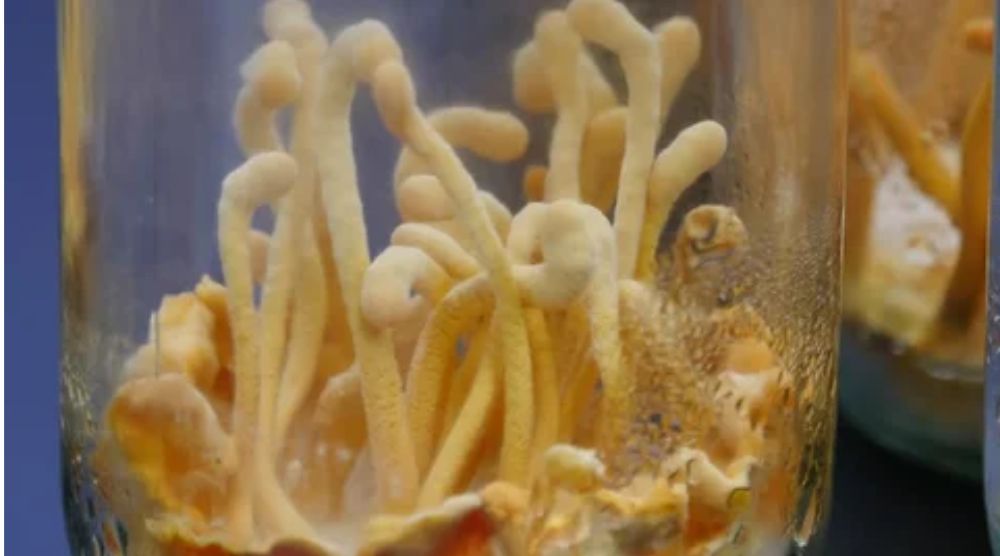
Implications for Cordyceps Consumers
For those of us who consume cordyceps for their health benefits, understanding the conditions in which they thrive is crucial. Knowing what temperature can cordyceps survive helps us understand their lifecycle better and ensures we can continue to benefit from them safely.
The Importance of Sustainable Consumption
- Awareness and Responsibility: As consumers, being aware of the environmental conditions and ethical sourcing is crucial to ensure sustainability and responsible consumption.
- Quality and Safety: Knowing the optimal growing conditions for cordyceps allows us to choose high-quality products that are safe to consume.
FAQs
Can cordyceps survive in freezing temperatures?
No, cordyceps generally cannot survive in freezing temperatures as they prefer warmer, humid environments for growth and propagation.
At what temperature do cordyceps start to die?
Cordyceps start to die at temperatures outside their optimal range; however, the exact temperature varies depending on the species.
Can cordyceps thrive in high-temperature environments?
Typically, cordyceps do not thrive in high-temperature environments; they prefer moderate to cool temperatures, with adequate humidity.
Is there a universal optimal temperature for all cordyceps species?
No, optimal temperatures vary among cordyceps species, each adapted to its specific environmental conditions and habitat.
Do cordyceps require temperature control for cultivation?
Yes, precise temperature control is crucial for cultivating cordyceps to ensure optimal growth and potency of beneficial compounds.
Conclusion
The exploration of what temperature can cordyceps survive has led last of us through a journey of understanding these fascinating fungi better. While the idea of cordyceps evolving to infect humans is currently in the realm of fiction, the ongoing changes in our environment due to global warming make it imperative to study and understand the potential implications.
Remember, as cordyceps consumers, our responsibility is to stay informed and choose sustainable and safe products. Let’s continue to explore and appreciate the intriguing world of cordyceps while respecting the delicate balance of nature and human cells.
